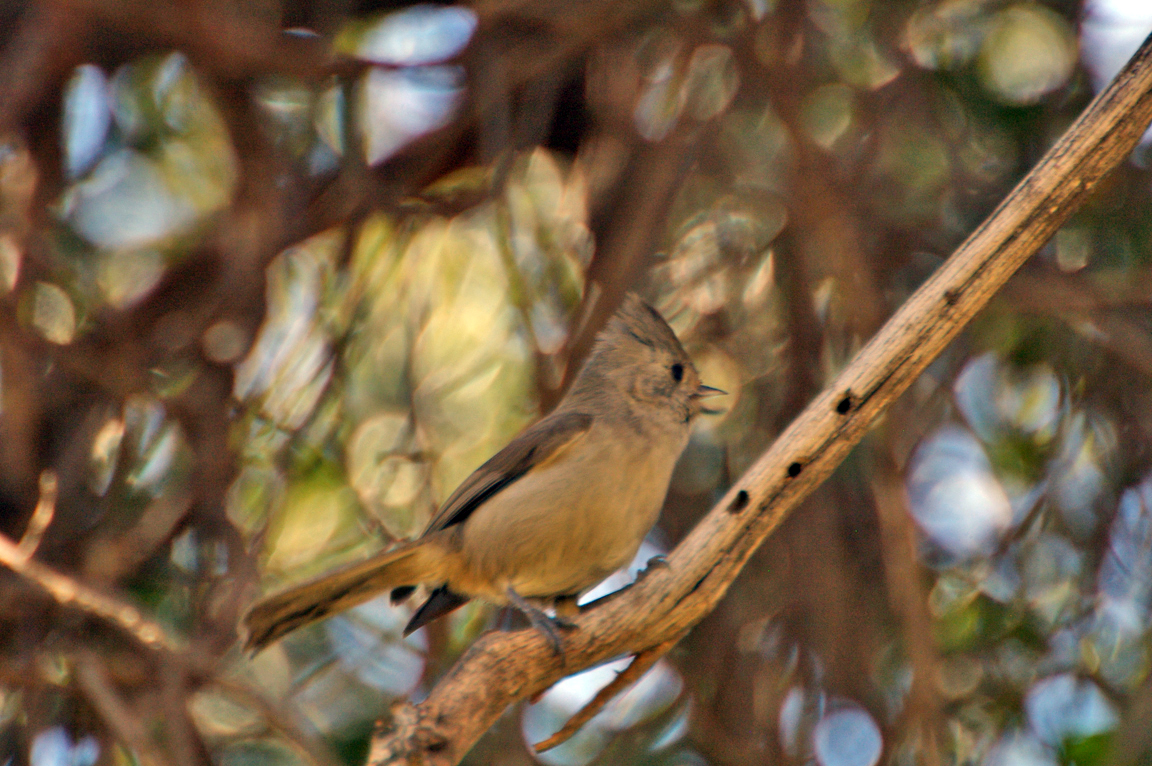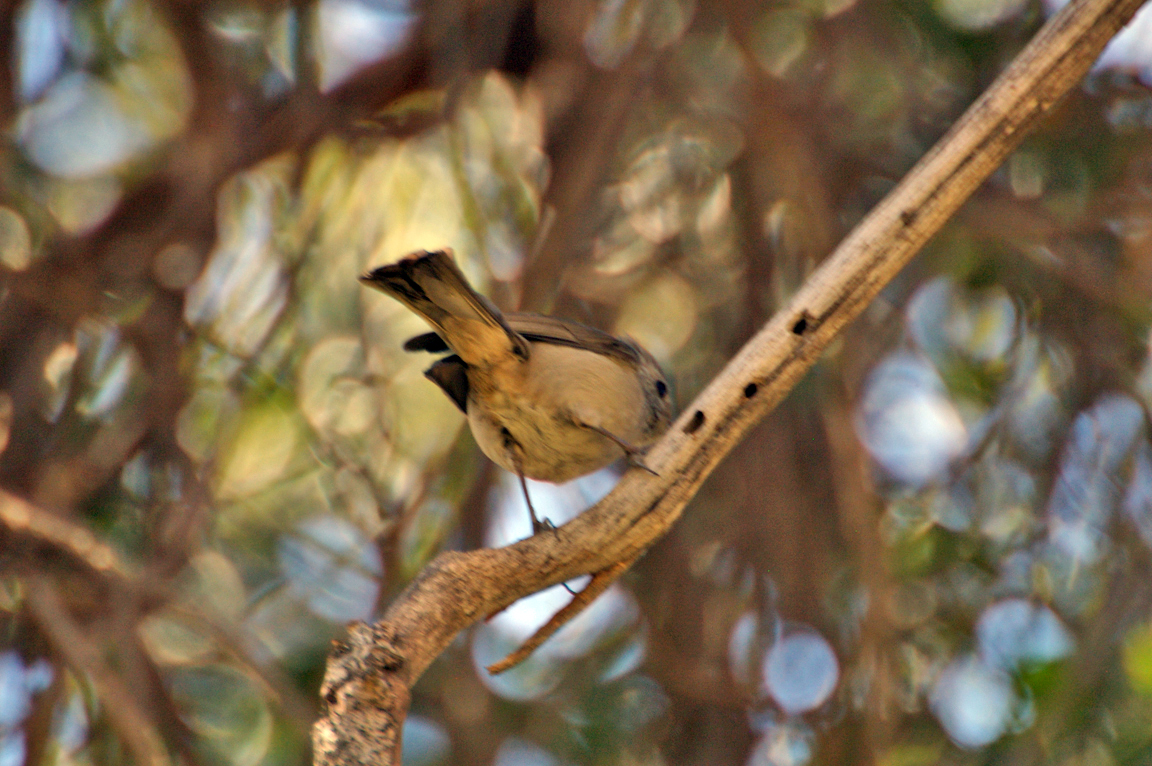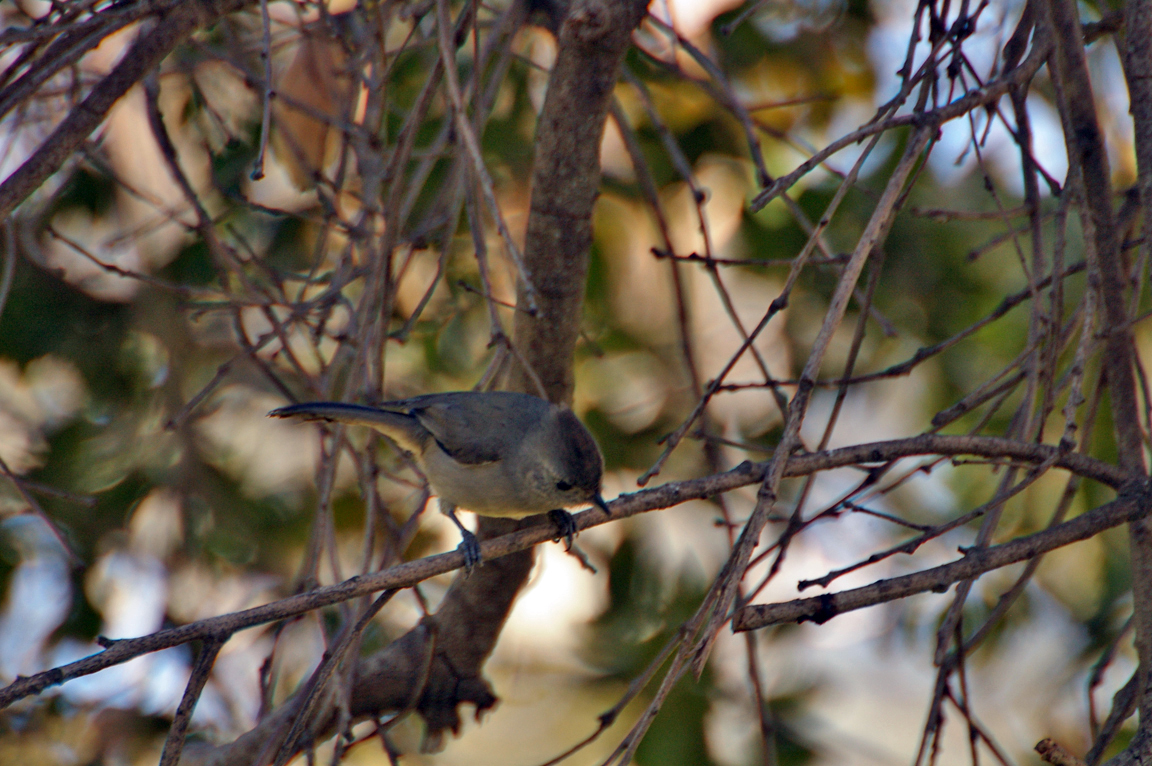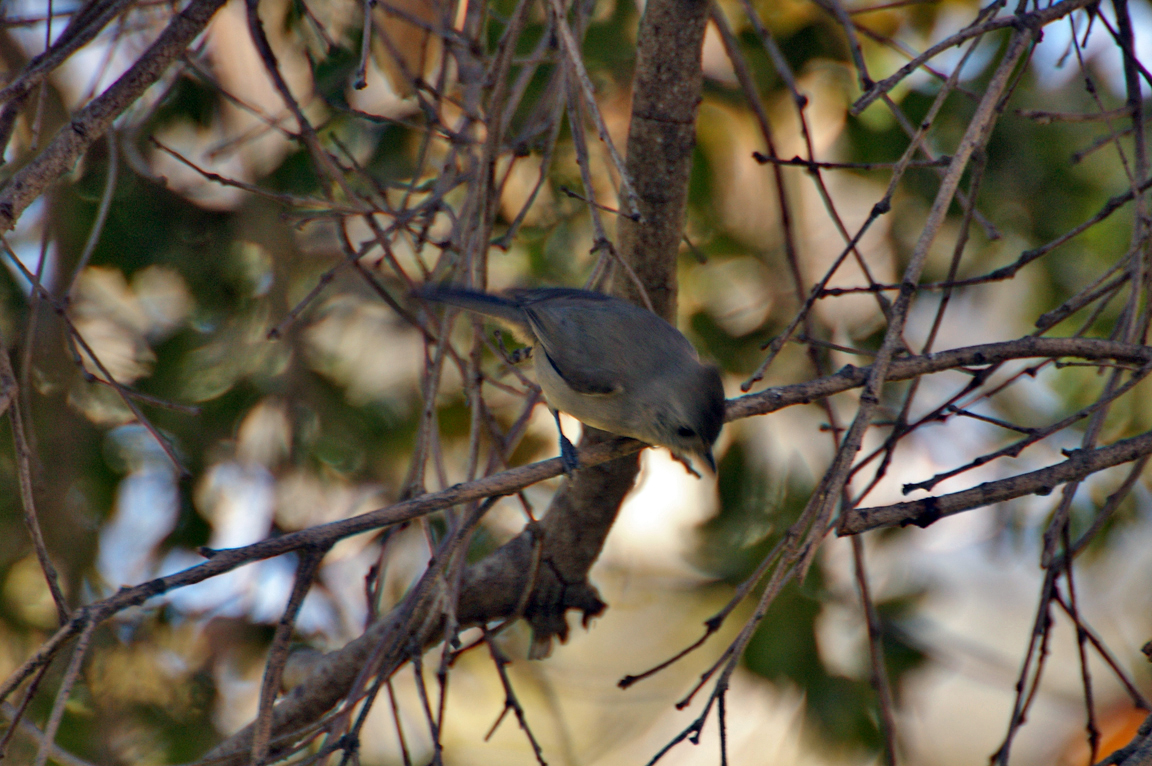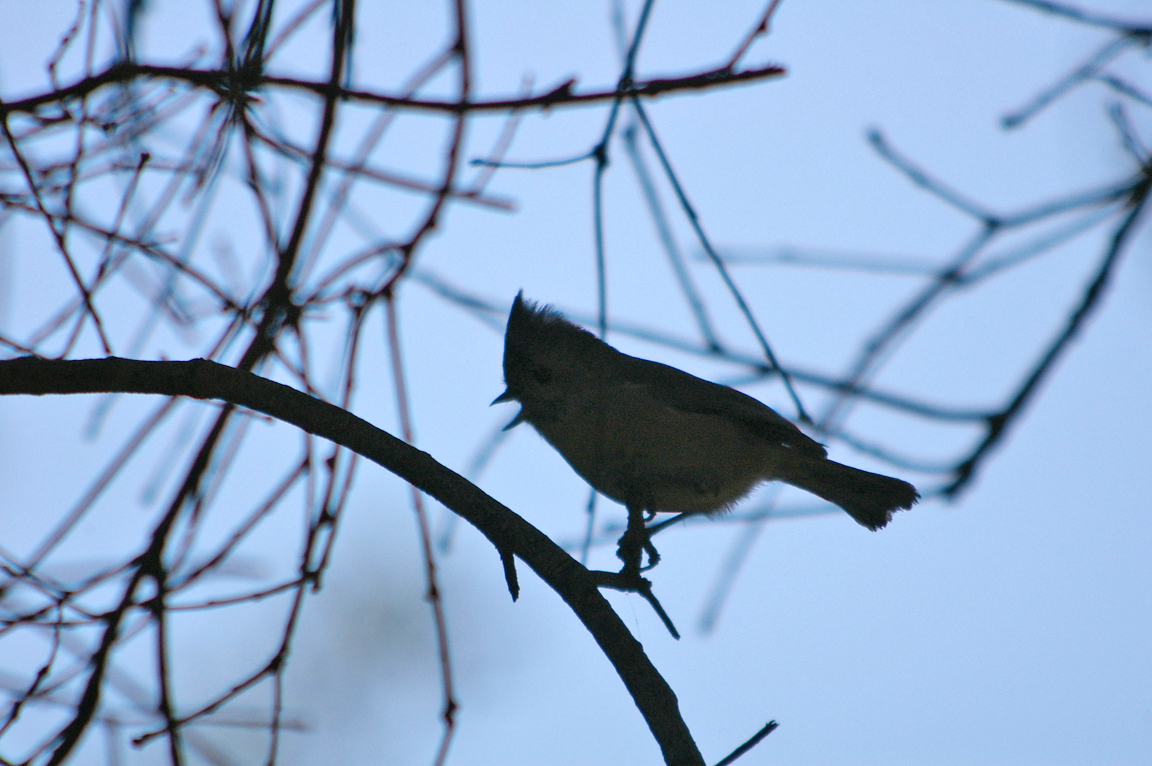|
|
|
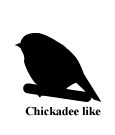 |
Oak Titmouse
|
| Baeolophus inornatus | |
Formerly lumped with the Juniper Titmouse as the species known appropriately as Plain Titmouse, the Oak Titmouse is small drab bird whose small head tuft is nearly its only field mark.
Interesting Information
-
The Oak Titmouse sleeps in cavities or in dense foliage. When roosting in foliage, the titmouse chooses a twig surrounded by dense foliage or an accumulation of dead pine needles, simulating a roost in a cavity.
-
The Oak Titmouse mates for life, and pairs defend year-round territories. Most titmice find a mate in their first fall. Those that do not are excluded from territories and must live in marginal habitat until they find a vacancy.
-
The Oak Titmouse, unlike other members of the family, does not form flocks in winter.
-
A group of titmice are collectively known as a "banditry" and a "dissimulation" of titmice.
Description
Adult Description
Small gray bird with small tuft on head.
-
Length Range: 13 cm (5.25 in)
-
Weight: 20 g (0.7 oz)
-
Size: Small (5 - 9 in)
Sex Differences
Sexes Similar
Immature
Juvenile similar to adult, but feathers are softer and more loosely textured.
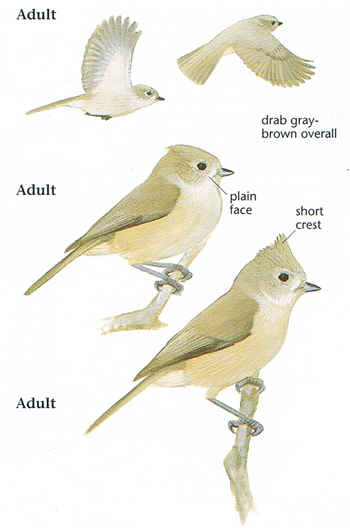
Photo taken from: The Sibley Field Guide by David Allen Sibley
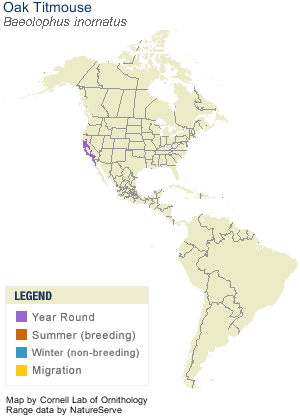
© 2003 Cornell Lab of Ornithology
|
Habitat |
|
Warm, dry oak and oak-pine woodlands at low to mid-elevations. |
|
Behavior |
|
Gleans insects from bark and foliage. Hangs upside down. Hammers seeds against branch to open them. |
|
Food |
|
Seeds and terrestrial invertebrates. Uses bird feeders. |
Taxonomy
| Kingdom: | Animalia |
| Phylum: | Chordata |
| Subphylum: | Vertebrata |
| Class: | Aves |
| Order: | Passeriformes |
| Family: | Paridae |
| Genus: | Baeolophus |
| Species: | Baeolophus inornatus |
| Subspecies: | Baeolophus inornatus affabilis |
| Baeolophus inornatus cineraceus | |
| Baeolophus inornatus cineraceus | |
| Baeolophus inornatus mohavensis |
Similar Species |
|
|
Bird Sound |
|
Song a series of repeated whistled notes, with first syllable higher in pitch than the following one. Calls a scratchy "tsicka-dee-dee." |
|
Eggs look like this |
|
Photo taken from: ARCTOS Collaborative Collection Management Solution |
